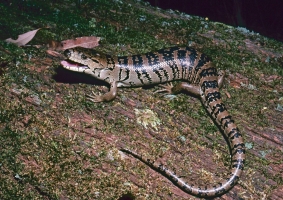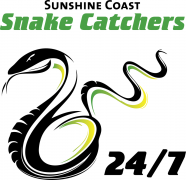
Significance to Humans:
Not Dangerous but will bite if handled.
General description:
Robust with a long body and tail, smooth body scales which are long and enlarged on the head. Colour can be highly variable, with shades of brown through to grey with bands between the neck and hips and on the tail. The head is robust and generally triangular in shape. Four short legs each with five toes. When harassed inflates its body and gapes its mouth to protrude its blue tongue sometimes with a hissing sound as it expels air.
Average length:
300-320mm but may reach a length of 550mm.
Habitat in SE Qld:
Virtually all habitat types excluding arid regions and rainforests. Shelters under fallen timber, ground debris and in hollows.
General habits:
Living in suburban gardens and under outdoor decking it often wonders into homes through open doors when foraging or looking for food or cooler/ warmer environments.
Diet:
Insects, snails, fruits and flowers and small vertebrates. Will take advantage of unattended dog and cat food.
Local distribution:
Found throughout the Sunshine Coast in virtually all suburbs except areas with particularly high elevation and rainforest.
Around the home:
This species is easily recognisable and despite its obvious size has successfully proliferated the suburban environment despite the high occurrence of large domestic animals in its favored suburban habitat. Cats and dogs account for large numbers of injured or dead blue tongues brought to wildlife carers every year. Although it has a strong bite and impressive defensive display it is generally inoffensive and of no concern to people or pets.
